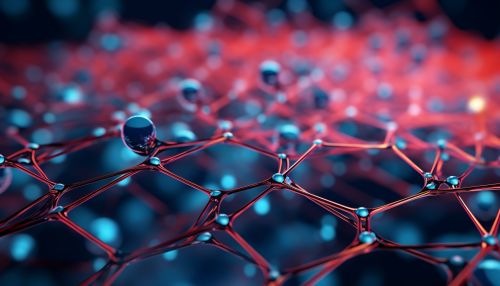Nanoscience
Introduction
Nanoscience is the study of phenomena and manipulation of materials at atomic, molecular and macromolecular scales, where properties differ significantly from those at a larger scale. It is a multidisciplinary field that seeks to understand the fundamental physics, chemistry, biology and technology of nanometre-scale objects.


History
The concept of nanoscience dates back to a 1959 talk by physicist Richard Feynman, called "There's Plenty of Room at the Bottom," although the term "nanotechnology" wasn't coined until 1974 by Japanese researcher Norio Taniguchi. Feynman's talk proposed the idea of directly manipulating atoms and molecules to create functional devices, which is a core concept of nanoscience.
Principles of Nanoscience
Nanoscience is based on the ability to build and manipulate structures at the nanoscale. It involves the application of the principles of quantum mechanics and thermodynamics to study the physical and chemical properties of elements at the nanoscale.
Quantum Mechanics
At the nanoscale, the principles of quantum mechanics become particularly important. Quantum effects such as quantum tunnelling and quantum entanglement can be observed more clearly at this scale. These quantum effects have a significant impact on the properties and behavior of materials at the nanoscale.
Thermodynamics
Thermodynamics also plays a crucial role in nanoscience. As the size of a system decreases, surface effects become more significant. This can lead to changes in the thermodynamic properties of the system, such as its melting point, heat capacity, or chemical reactivity.
Nanomaterials
Nanomaterials are a central part of nanoscience. They have unique properties that differ from those of bulk materials. For example, they have a larger surface area per weight, which can make them more chemically reactive. They can also exhibit quantum effects, such as quantum tunnelling and quantum confinement.


Types of Nanomaterials
There are several types of nanomaterials, including nanoparticles, nanotubes, nanowires, nanorods, and nanosheets. Each of these has unique properties and potential applications.
Applications of Nanoscience
Nanoscience has a wide range of applications in various fields, from medicine and electronics to energy and environmental science.
Medicine
In medicine, nanoscience is used in areas such as drug delivery, gene therapy, and tissue engineering. For example, nanoparticles can be used to deliver drugs directly to cancer cells, reducing the side effects of chemotherapy.
Electronics
In electronics, nanoscience is used to develop smaller, faster, and more energy-efficient devices. For example, transistors made from nanowires or nanotubes could potentially replace traditional silicon transistors, leading to faster and smaller electronic devices.
Energy
In the field of energy, nanoscience is used to develop more efficient solar cells, batteries, and fuel cells. For example, nanoparticles can be used to increase the efficiency of solar cells by absorbing more light.
Environmental Science
In environmental science, nanoscience is used to develop new methods for water purification, air pollution control, and waste management. For example, nanoparticles can be used to remove heavy metals and other pollutants from water.
Future of Nanoscience
The future of nanoscience looks promising, with many potential applications still being explored. As our understanding of the nanoscale continues to grow, so too will the potential for new and innovative applications of nanoscience.


See Also
- Nanotechnology
- Quantum Mechanics
- Thermodynamics
- Nanomaterials
- Drug Delivery
- Transistors
- Solar Cells
- Water Purification
